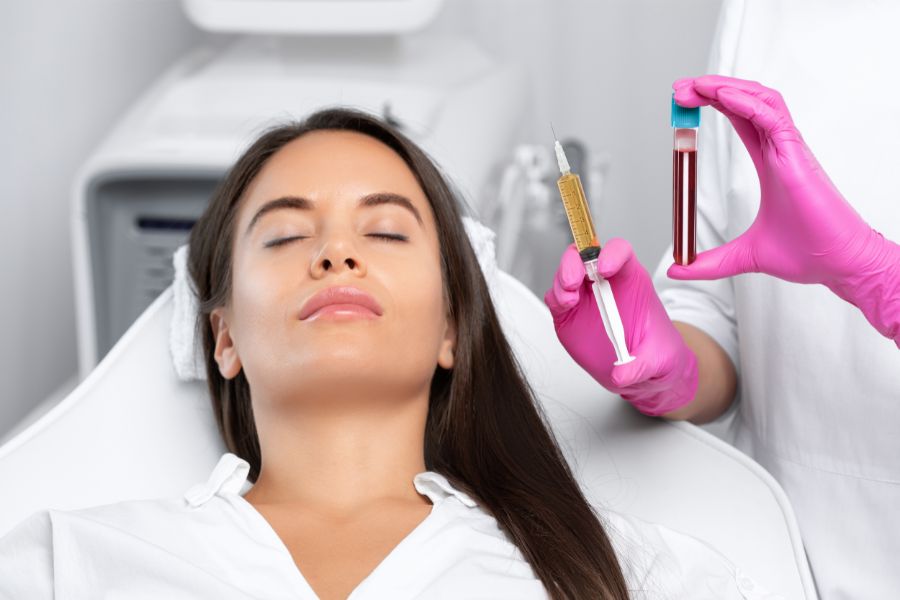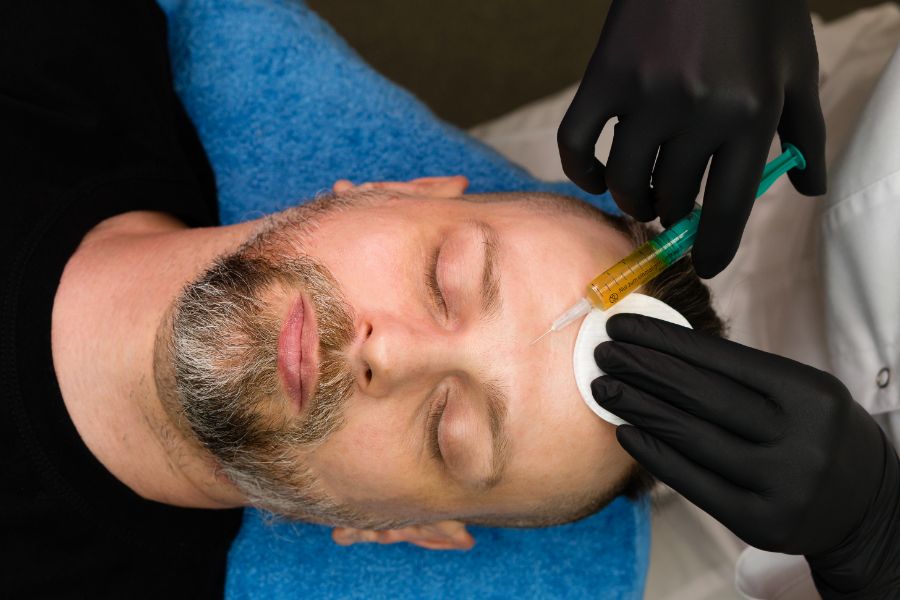
Ever wondered how to kickstart your skin’s renewal process? In the world of skincare, PRP and PRF are two acronyms making waves. These treatments promise to enhance your skin’s texture, speed up healing, and bring back that youthful glow. So, let’s cut through the jargon and break down PRP and PRF, figuring out which one might just be the skincare solution you’ve been searching for.
When it comes to Platelet-Rich Plasma (PRP), it’s like giving your skin a natural boost. It involves taking a small amount of your blood, processing it to extract the platelet-rich plasma, and then applying it back to your skin. This process is known to stimulate collagen production and accelerate healing, and what’s great is that it works well for every skin type and works on various areas of your body.
Now, entering the scene is Platelet-Rich Fibrin (PRF), an upgraded version of PRP. Think of it as the advanced sibling, addressing some of the limitations of PRP. With a more prolonged release of growth factors, PRF takes tissue regeneration and healing to a whole new level. But does it outshine PRP in every aspect? Let’s find out.
Understanding Platelet-Rich Plasma (PRP)

PRP uses your blood to help your skin. A bit of blood is taken, processed to get the good stuff, and then put on your skin. This helps make more collagen and speed up healing.
- Packed with Good Stuff: PRP has a mix of things like platelet cytokines, growth factors, and stem cells. These are important for renewing your skin and producing more collagen.
- Microneedling Boosts Effectiveness: PRP often goes with microneedling, where tiny holes are made in your skin. This helps the good stuff from PRP get in better and kickstarts your body’s healing response.
- Works for Everyone: No matter your skin type, PRP with microneedling is a flexible solution for many people.
Using microneedles with PRP can do wonders. The little skin punctures, combined with PRP, make your skin regenerate faster, leaving you with younger-looking skin. Now, let’s explore how Platelet-Rich Fibrin (PRF) takes this concept to the next level.
The Next Step: Platelet-Rich Fibrin (PRF)

PRF is like an upgraded version of PRP. It fixes what PRP couldn’t do as well. It releases more growth factors for a longer time, making it great for healing and growing new tissue.
- Better Growth Factor Release: PRF, the second-gen platelet thing, is better than PRP. It releases more growth factors for a longer time, helping your tissues regenerate better.
- Fibrin for Skin Renewal: PRF has something called fibrin, which helps wounds heal, renews skin, and even grows hair. Fibrin is a natural support structure that’s crucial for these processes.
- More Stem Cells: PRF has more stem cells than PRP, making it more effective for overall skin health.
In the world of microneedling, PRF is the new thing. It’s packed with stem cells, fibrin, and white blood cells, making your skin produce more collagen and renew itself.
Conclusion
So, which one should you choose for your skin goals? If you’re looking for a versatile and effective solution suitable for various skin types and areas, Platelet-Rich Plasma (PRP) with microneedling might be your go-to. It’s a reliable option that stimulates collagen production and accelerates skin rejuvenation.
On the other hand, if you desire a more advanced treatment with a prolonged release of growth factors and a higher concentration of stem cells, Platelet-Rich Fibrin (PRF) takes the spotlight. This upgraded version offers a comprehensive approach to tissue regeneration, skin renewal, and overall skin health.
In the end, whether it’s the tried-and-true PRP or the innovative PRF, the common denominator is microneedling. This technique, combined with either treatment, unleashes your body’s natural healing power.
Before making a decision, it’s always a good idea to consult with your healthcare providers. They can examine your skin and suggest the best treatment for you. So, ask your providers or get your skin checked to ensure you receive the personalized care your skin deserves.


